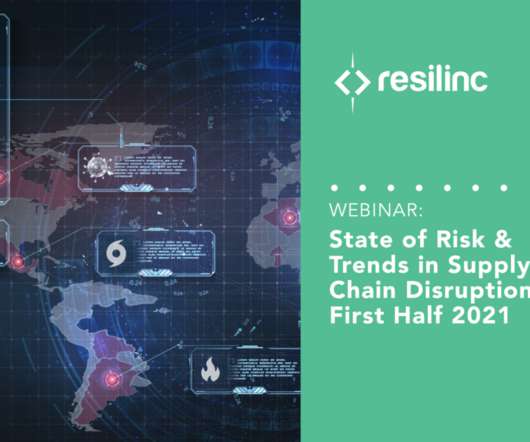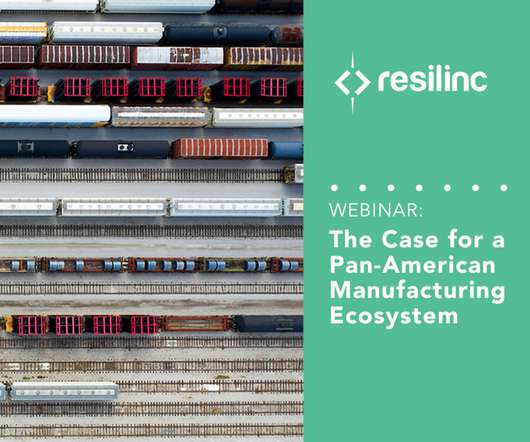Supply Chain: Interrupted. A recap of our recent webinar on disruptions and trends from the first half of 2021
Resilinc
AUGUST 31, 2021
In a recent webinar on the state of risk and trends in supply chains, Resilinc CEO, Bindiya Vakil, and Director of Supply Chain Risk Consulting, Hirra Akhtar, described how aftershocks arising from the pandemic continue to disrupt supplies and logistics, and that these disruptions will continue well into 2022.
















Let's personalize your content